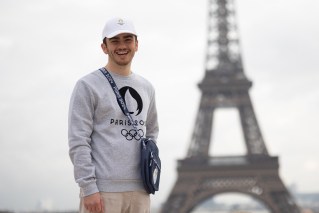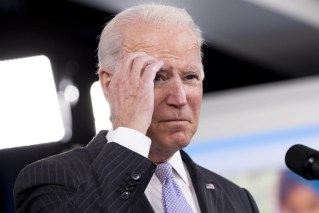Our teen suicide tsunami: 2000 desperate cries for help that are going unheard
Queensland’s Kids Helpline is being swamped by almost 140,000 calls for help every year, and the scale of this teen suicide tsunami continues to escalate, writes Madonna King


Kids Helpline is a critical safety net for the young but can't keep pace with demand. (MEDIANET IMAGES PHOTO)
What would happen if you called Triple 0, and it was only answered two times out of five?
Or if only 60 percent of calls you made to an ambulance were left unanswered?
Imagine the headlines. The shame. The call for funds. And the immediate response by politicians and philanthropists.
And yet, every time a child contacts Kids Helpline, there is only a 40 percent chance they will be connected with a counsellor, who might provide the only lifeline they have on offer.
That’s two out of every five contacts. It means that in six of every 10 immediate cries for help, our teens and young adults are left with no-one responding.
That’s cause for heartbreak. It’s also cause for a massive funding boost. And for a more strategic focus on the mental health of our children.
We shouldn’t need any other numbers, but each of these digits carries a story; a story of a young person not coping, but being brave enough to ask for help.
And we can’t help them – because the need is now so great, and resources so limited.
In the past year, Kids Helpline counsellors have responded to 138,970 “contacts” by children and young adults, into their early 20s.
Each of those calls – and 83,000 of them occurred outside normal working hours – includes a plea for help from someone outside the caller’s family or friends’ network.
But the picture of mental health and our young people carries a further dreadful dimension.
About 13,000 of all contacts to Kids Helpline now relate to suicidal thoughts or fears, immediate intention, or a current attempt at the time the call was being made.
Counsellors label it simply “disturbing’’.
And if we dig even deeper, the evidence emerges of why we cannot just read these statistics and move on.
Last financial year, 4608 “duty of care responses’’ occurred. That amounts to 87 each week.
And of that number almost 2000 – or 42 percent – “duty of care contacts’’ were made where young people were at “immediate risk of suicide and required emergency intervention’’.
Often in contracts and reports and certainly insurance claims, the fine print holds the most pertinent message.
And this is no different. What does “duty of care” even mean? It’s where counsellors call police or ambulance or domestic services or a homeless shelter to help a child who has been – or about to be – hurt.
These figures are not in contention. They are a fact. And they are at record levels across the nation, signalling the lasting legacy COVID19 and its lockdowns have had on the mental health of our children.
Some school principals are now seeing mental health challenges as the biggest obstacle to learning in classrooms. From eating disorders to school refusal and escalating anxiety levels, they are also reporting children suffering in younger year levels.
GPs report the same, with almost half of their consultations in some practices now having a mental health component.
So what are we doing about it?
It’s tricky and difficult and some of those challenges are fed by toxic smart-phone conversations and appalling apps that carry no age verification.
Others are grown in family situations, or by extreme isolation, or a driving need amongst many teens to ‘fit in’ to a box that was never created for them.
But our future – and their future – rides on us facing up to this monster, and addressing it.
How? More money, certainly, so Kids Helpline could help every kid who calls them.
Shouldn’t that simply be the lowest denominator; that a child wanting to make contact with a counsellor to seek advice is able to do that?
What about if we put together a working party of stunning minds – school principals, teen psychologists, GPs, researchers, counsellors – and asked them to come up with a political prescription that might provide a way forward?
And then our politicians implemented that, without hesitation.
It will prove costly. But nothing near the cost of ignoring a problem that is now touching almost every street in the nation.












